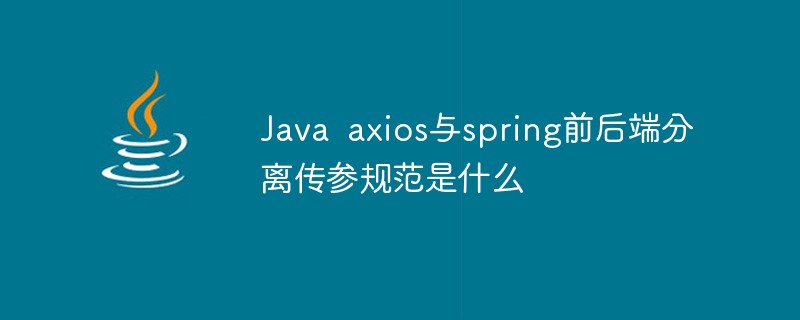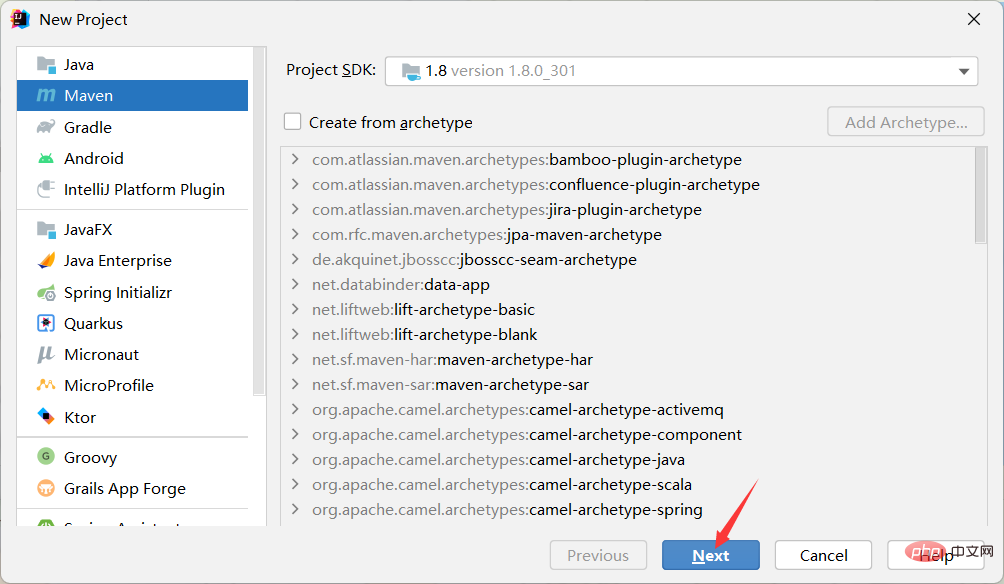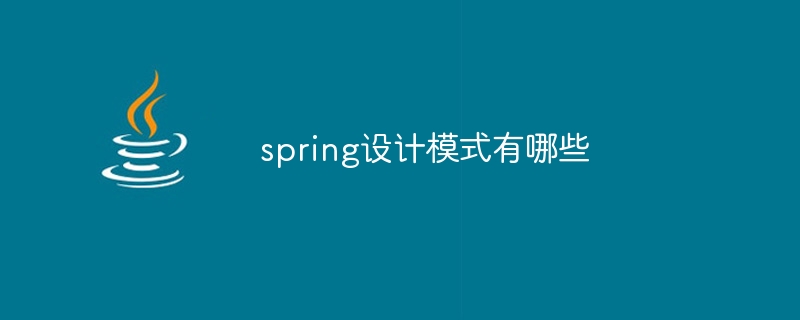一、默认装配方式
代码通过getBean();方式从容器中获取指定的Bean实例,容器首先会调用Bean类的无参构造器,创建空值的实例对象。
举例:
首先我在applicationContext.xml配置文件中配置了一个bean:
<?xml version="1.0" encoding="UTF-8"?><beans><!-- 注册Service 这里相当于容器做了SomeServiceImpl myService = new SomeServiceImpl(); --><bean></bean></beans>
创建SomeServiceImpl对象,但需要注意的是该类的只具有带参构造函器,没有无参构造器:
package com.ietree.spring.basic.ioc;/**
* 实现类
*
* @author Root */public class SomeServiceImpl implements ISomeService {private int a; // 这里注释掉了无参构造函数,希望容器通过带参构造函数创建对象// public SomeServiceImpl() {// System.out.println("执行无参构造器,创建SomeServiceImpl对象");// }public SomeServiceImpl(int a) {this.a = a;
}
@Overridepublic void doSomeThing() {
System.out.println("执行doSomeThing()方法...");
}
}测试:
@Testpublic void testConstructor() {// 创建容器对象,加载Spring配置文件// ClassPathXmlApplicationContext会从类路径下查找配置文件ApplicationContext ac = new ClassPathXmlApplicationContext("applicationContext.xml");
ISomeService service = (ISomeService) ac.getBean("myService");
service.doSomeThing();
}此时程序会报以下的错误:
org.springframework.beans.factory.BeanCreationException: Error creating bean with name 'myService' defined in class path resource [applicationContext.xml]: Instantiation of bean failed; nested exception is org.springframework.beans.BeanInstantiationException: Failed to instantiate [com.ietree.spring.basic.ioc.SomeServiceImpl]: No default constructor found; nested exception is java.lang.NoSuchMethodException: com.ietree.spring.basic.ioc.SomeServiceImpl.<init>() at org.springframework.beans.factory.support.AbstractAutowireCapableBeanFactory.instantiateBean(AbstractAutowireCapableBeanFactory.java:1155) at org.springframework.beans.factory.support.AbstractAutowireCapableBeanFactory.createBeanInstance(AbstractAutowireCapableBeanFactory.java:1099) at org.springframework.beans.factory.support.AbstractAutowireCapableBeanFactory.doCreateBean(AbstractAutowireCapableBeanFactory.java:513) at org.springframework.beans.factory.support.AbstractAutowireCapableBeanFactory.createBean(AbstractAutowireCapableBeanFactory.java:483) at org.springframework.beans.factory.support.AbstractBeanFactory$1.getObject(AbstractBeanFactory.java:306) at org.springframework.beans.factory.support.DefaultSingletonBeanRegistry.getSingleton(DefaultSingletonBeanRegistry.java:230) at org.springframework.beans.factory.support.AbstractBeanFactory.doGetBean(AbstractBeanFactory.java:302) at org.springframework.beans.factory.support.AbstractBeanFactory.getBean(AbstractBeanFactory.java:197) at org.springframework.beans.factory.support.DefaultListableBeanFactory.preInstantiateSingletons(DefaultListableBeanFactory.java:761) at org.springframework.context.support.AbstractApplicationContext.finishBeanFactoryInitialization(AbstractApplicationContext.java:867) at org.springframework.context.support.AbstractApplicationContext.refresh(AbstractApplicationContext.java:543) at org.springframework.context.support.ClassPathXmlApplicationContext.<init>(ClassPathXmlApplicationContext.java:139) at org.springframework.context.support.ClassPathXmlApplicationContext.<init>(ClassPathXmlApplicationContext.java:83) at com.ietree.spring.basic.test.MyTest.testConstrutor(MyTest.java:67) at sun.reflect.NativeMethodAccessorImpl.invoke0(Native Method) at sun.reflect.NativeMethodAccessorImpl.invoke(Unknown Source) at sun.reflect.DelegatingMethodAccessorImpl.invoke(Unknown Source) at java.lang.reflect.Method.invoke(Unknown Source) at org.junit.runners.model.FrameworkMethod$1.runReflectiveCall(FrameworkMethod.java:50) at org.junit.internal.runners.model.ReflectiveCallable.run(ReflectiveCallable.java:12) at org.junit.runners.model.FrameworkMethod.invokeExplosively(FrameworkMethod.java:47) at org.junit.internal.runners.statements.InvokeMethod.evaluate(InvokeMethod.java:17) at org.junit.runners.ParentRunner.runLeaf(ParentRunner.java:325) at org.junit.runners.BlockJUnit4ClassRunner.runChild(BlockJUnit4ClassRunner.java:78) at org.junit.runners.BlockJUnit4ClassRunner.runChild(BlockJUnit4ClassRunner.java:57) at org.junit.runners.ParentRunner$3.run(ParentRunner.java:290) at org.junit.runners.ParentRunner$1.schedule(ParentRunner.java:71) at org.junit.runners.ParentRunner.runChildren(ParentRunner.java:288) at org.junit.runners.ParentRunner.access$000(ParentRunner.java:58) at org.junit.runners.ParentRunner$2.evaluate(ParentRunner.java:268) at org.junit.runners.ParentRunner.run(ParentRunner.java:363) at org.eclipse.jdt.internal.junit4.runner.JUnit4TestReference.run(JUnit4TestReference.java:86) at org.eclipse.jdt.internal.junit.runner.TestExecution.run(TestExecution.java:38) at org.eclipse.jdt.internal.junit.runner.RemoteTestRunner.runTests(RemoteTestRunner.java:459) at org.eclipse.jdt.internal.junit.runner.RemoteTestRunner.runTests(RemoteTestRunner.java:678) at org.eclipse.jdt.internal.junit.runner.RemoteTestRunner.run(RemoteTestRunner.java:382) at org.eclipse.jdt.internal.junit.runner.RemoteTestRunner.main(RemoteTestRunner.java:192) Caused by: org.springframework.beans.BeanInstantiationException: Failed to instantiate [com.ietree.spring.basic.ioc.SomeServiceImpl]: No default constructor found; nested exception is java.lang.NoSuchMethodException: com.ietree.spring.basic.ioc.SomeServiceImpl.<init>()at org.springframework.beans.factory.support.SimpleInstantiationStrategy.instantiate(SimpleInstantiationStrategy.java:85) at org.springframework.beans.factory.support.AbstractAutowireCapableBeanFactory.instantiateBean(AbstractAutowireCapableBeanFactory.java:1147) ... 36 more Caused by: java.lang.NoSuchMethodException: com.ietree.spring.basic.ioc.SomeServiceImpl.<init>() at java.lang.Class.getConstructor0(Unknown Source) at java.lang.Class.getDeclaredConstructor(Unknown Source) at org.springframework.beans.factory.support.SimpleInstantiationStrategy.instantiate(SimpleInstantiationStrategy.java:80) ... 37 more</init></init></init></init></init>
解析:这里的错误报的很明显,没有发现默认的构造器。
修改:为该类加上无参构造器:
package com.ietree.spring.basic.ioc;/**
* 实现类
*
* @author Root */public class SomeServiceImpl implements ISomeService {private int a; public SomeServiceImpl() {
System.out.println("执行无参构造器,创建SomeServiceImpl对象");
}public SomeServiceImpl(int a) {this.a = a;
}
@Overridepublic void doSomeThing() {
System.out.println("执行doSomeThing()方法...");
}
}此时,再次运行测试用例,会发现运行成功。
结论:Spring容器实际上是使用了类的反射机制,会首先调用Bean类的无参构造器创建实例对象。
二、动态工厂Bean
创建SomeServiceImpl类:
package com.ietree.spring.basic.ioc;/**
* 实现类
*
* @author Root */public class SomeServiceImpl implements ISomeService {public SomeServiceImpl() {
System.out.println("执行无参构造器,创建SomeServiceImpl对象");
}
@Overridepublic void doSomeThing() {
System.out.println("执行doSomeThing()方法...");
}
}创建工厂类ServiceFactory:
package com.ietree.spring.basic.ioc;/**
* 工厂类
*
* @author Root */public class ServiceFactory {public ISomeService getSomeService() {return new SomeServiceImpl();
}
}使用动态工厂方式获取Bean对象,配置如下:
<?xml version="1.0" encoding="UTF-8"?><beans><!-- 注册动态工厂 --><bean></bean><!-- 注册Service:动态工厂Bean --><bean></bean></beans>
在这里并没有注册SomeServiceImpl类,而是通过ServiceFactory工厂的getSomeService方法获取的。
测试:
@Testpublic void testFactory1() {
ApplicationContext ac = new ClassPathXmlApplicationContext("applicationContext.xml");
ISomeService service = (ISomeService) ac.getBean("myService");
service.doSomeThing();
}运行成功。
三、静态工厂Bean
静态工厂和动态工厂不同的是,静态工厂中使用的是静态方法创建对象,如:
package com.ietree.spring.basic.ioc;/**
* 工厂类
*
* @author Root */public class ServiceFactory { // 使用静态方法创建对象public static ISomeService getSomeService() {return new SomeServiceImpl();
}
}对应的配置文件修改如下:
<?xml version="1.0" encoding="UTF-8"?><beans><!-- 注册Service:静态工厂Bean --><bean></bean></beans>
测试:
@Testpublic void testFactory1() {
ApplicationContext ac = new ClassPathXmlApplicationContext("applicationContext.xml");
ISomeService service = (ISomeService) ac.getBean("myService");
service.doSomeThing();
}成功创建SomeServiceImpl对象。
四、容器中的Bean的作用域
Bean的作用域(scope)分为四种,分别是singleton、prototype、request、session。
scope:
singleton(默认):单例模式,其对象的创建时机是在Spring容器初始化时创建,是默认值
prototype:原型模式,其对象的创建时机不是在Spring容器初始化时创建,而是在代码中真正访问时才创建,每次使用getBean方法获取的同一个<bean></bean>的实例都是一个新的实例
request:对于每次HTTP请求,都将会产生一个不同的Bean实例
session:对于每个不同的HTTP session,都将会产生一个不同的Bean实例
验证:
首先配置作用域为singleton:
<bean></bean>
测试:
@Testpublic void test05() {
ApplicationContext ac = new ClassPathXmlApplicationContext("applicationContext.xml");
ISomeService service1 = (ISomeService) ac.getBean("myService");
ISomeService service2 = (ISomeService) ac.getBean("myService");
System.out.println("service1 = service2吗?" + (service1 == service2));
}程序输出:
调用无参构造器 service1 = service2吗?true
结论:当作用域为singleton单例模式时,只会创建一个对象实例,并且对象是在Spring容器初始化时创建。
同样,当配置为prototype原型模式时:
<bean></bean>
程序输出:
调用无参构造器 调用无参构造器 service1 = service2吗?false
结论:构造器被调用了两次,说明创建的service1和service2不是同一个对象,并且对象是在被使用到时才创建的。
五、Bean后处理器
Bean后处理器是一种特殊的Bean,容器中所有的Bean在初始化时,均会自动执行该类的两个方法。由于该Bean是由其它Bean自动调用执行,不是程序员手工调用,故此Bean无须id属性。
需要做的是,在Bean后处理器类方法中,只要对Bean类与Bean类中的方法进行判断,就可实现对指定的Bean的指定的方法进行功能扩展与增强。方法返回的Bean对象,即是增强过的对象。
代码中需要自定义Bean后处理器类,该类就是实现了接口BeanPostProcessor的类。该接口中包含两个方法,分别在目标Bean初始化完毕之前与之后执行,它的返回值为功能被扩展或增强后的Bean对象。
举例:利用Bean后处理器实现大小写字符串转换
接口类ISomeService:
/**
* 接口类
*
* @author Root */public interface ISomeService {
String doSomeThing();
}实现类SomeServiceImpl:
/**
* 实现类
*
* @author Root */public class SomeServiceImpl implements ISomeService {public SomeServiceImpl() {
System.out.println("调用无参构造器");
} // 返回小写字母“abcde” @Overridepublic String doSomeThing() {return "abcde";
}
}定义Bean处理器MyBeanPostProcessor:
import java.lang.reflect.InvocationHandler;import java.lang.reflect.Method;import java.lang.reflect.Proxy;import org.springframework.beans.BeansException;import org.springframework.beans.factory.config.BeanPostProcessor;/**
* Bean后处理器
*
* @author Root */public class MyBeanPostProcessor implements BeanPostProcessor {// bean:表示当前正在进行初始化的Bean对象// beanName:表示当前正在进行初始化的Bean对象的id @Overridepublic Object postProcessBeforeInitialization(Object bean, String beanName) throws BeansException {
System.out.println("执行----before()方法---");return bean;
}
@Overridepublic Object postProcessAfterInitialization(Object bean, String beanName) throws BeansException {
System.out.println("执行----after()方法---");
Object obj = Proxy.newProxyInstance(
bean.getClass().getClassLoader(),
bean.getClass().getInterfaces(),new InvocationHandler() {
@Overridepublic Object invoke(Object proxy, Method method, Object[] args) throws Throwable {
Object invoke = method.invoke(bean, args);return ((String) invoke).toUpperCase();
}
});return obj;
}
}使用JDK动态代理实现大小写转换的功能。
配置文件:
<bean></bean><bean></bean>
注意:Bean后处理器不需要配置id的,因为它是随着对象的创建自动调用的。
测试:
@Testpublic void test05() {
ApplicationContext ac = new ClassPathXmlApplicationContext("applicationContext.xml");
ISomeService service = (ISomeService) ac.getBean("myService");
String result = service.doSomeThing();
System.out.println(result);
}程序输出:
调用无参构造器 执行----before()方法---执行----after()方法---ABCDE
增强成功。可以判断代理类的类型,进行对单个或单独一类对象做增强。
六、定制Bean的生命周期
Bean实例从创建到最后销毁,需要经过很多过程,执行很多生命周期方法。
Step1:调用无参构造器,创建实例对象。
Step2:调用参数的setter,为属性注入值。
Step3:若Bean实现了BeanNameAware接口,则会执行接口方法setBeanName(String beanId),使Bean类可以获取其在容器中的id名称。
Step4:若Bean实现了BeanFactoryAware接口,则执行接口方法setBeanFactory(BeanFactory factory),使Bean类可以获取到BeanFactory对象。
Step5:若定义并注册了Bean后处理器BeanPostProcessor,则执行接口方法postProcessBeforeInitialization()。
Step6:若Bean实现了InitializingBean接口,则执行接口方法afterPropertiesSet()方法。该方法在Bean的所有属性的set方法执行完毕后执行,是Bean初始化结束的标志,即Bean实例化结束。
Step7:若设置了init-method方法,则执行。
Step8:若定义并注册了Bean后处理器BeanPostProcessor,则执行接口方法postProcessAfterInitialization().
Step9:执行业务方法。
Step10:若Bean实现了DisposableBean接口,则执行接口方法destroy()。
Step11:若设置了destroy-method方法,则执行。
举例:
创建接口类ISomeService:
/**
* 接口类
*
* @author Root */public interface ISomeService { void doSomeThing();
}创建接口实现类SomeServiceImpl:
import org.springframework.beans.BeansException;import org.springframework.beans.factory.BeanFactory;import org.springframework.beans.factory.BeanFactoryAware;import org.springframework.beans.factory.BeanNameAware;import org.springframework.beans.factory.DisposableBean;import org.springframework.beans.factory.InitializingBean;/**
* 实现类
*
* @author Root */public class SomeServiceImpl implements ISomeService, BeanNameAware, BeanFactoryAware, InitializingBean, DisposableBean { // 两个属性private String adao;private String bdao; public void setAdao(String adao) {this.adao = adao;
System.out.println("Step2:执行settter");
}public void setBdao(String bdao) {this.bdao = bdao;
System.out.println("Step2:执行settter");
}public SomeServiceImpl() {
System.out.println("Step1:调用无参构造器");
}
@Overridepublic void doSomeThing() {
System.out.println("Step9:执行doSomeThing()");
} public void setUp(){
System.out.println("Step7:初始化完毕之后 ");
} public void tearDown(){
System.out.println("Step11:销毁之前");
}
@Overridepublic void setBeanName(String name) {
System.out.println("Step3:获取到bean的id = " + name);
}
@Overridepublic void setBeanFactory(BeanFactory beanFactory) throws BeansException {
System.out.println("Step4:获取到BeanFactory容器 ");
}
@Overridepublic void afterPropertiesSet() throws Exception {
System.out.println("Step6:Bean初始化完毕了 ");
}
@Overridepublic void destroy() throws Exception {
System.out.println("Step10:实现的接口销毁之前 ");
}
}创建BeanPostProcessor接口的实现类MyBeanPostProcessor:
import org.springframework.beans.BeansException;import org.springframework.beans.factory.config.BeanPostProcessor;/**
* Bean后处理器
*
* @author Root */public class MyBeanPostProcessor implements BeanPostProcessor {// bean:表示当前正在进行初始化的Bean对象// beanName:表示当前正在进行初始化的Bean对象的id @Overridepublic Object postProcessBeforeInitialization(Object bean, String beanName) throws BeansException {
System.out.println("Step5:执行----before()方法---");return bean;
}
@Overridepublic Object postProcessAfterInitialization(Object bean, String beanName) throws BeansException {
System.out.println("Step8:执行----after()方法---");return bean;
}
}配置applicationContext.xml文件:
<bean></bean>
测试类:
@Testpublic void test05() {
String resource = "com/ietree/spring/basic/ioc/method3/applicationContext.xml";
ApplicationContext ac = new ClassPathXmlApplicationContext(resource);
ISomeService service = (ISomeService) ac.getBean("myService");
service.doSomeThing();// 对于销毁方法的执行,有两个条件:// 1)当前的Bean需要是singleton的// 2)要手工关闭容器 ((ClassPathXmlApplicationContext) ac).close();
}程序输出:
Step1:调用无参构造器 Step2:执行settter Step2:执行settter Step3:获取到bean的id = myService Step4:获取到BeanFactory容器 Step5:执行----before()方法---Step6:Bean初始化完毕了 Step7:初始化完毕之后 Step8:执行----after()方法---Step9:执行doSomeThing() Step10:实现的接口销毁之前 Step11:销毁之前
正如程序输出的序列一样,此顺序即是对象创建的调用顺序,在编程中可以在某一个过程对其进行增强操作。
七、<bean></bean>标签的id属性与name属性
一般情况下,命名<bean></bean>使用id属性,而不是用name属性,在没有id属性的情况下,name属性与id属性作用是相同的。但,当<bean></bean>中含有一些特殊字符时,就需要使用name属性了。
id的命名需要满足XML对ID属性命名规范:必须以字母开头,可以包含字母、数字、下划线、连字符、句号、冒号。
name属性值可以包含各种字符。
The above is the detailed content of Spring Framework Part 2: Bean Assembly. For more information, please follow other related articles on the PHP Chinese website!
 Java Spring怎么实现定时任务May 24, 2023 pm 01:28 PM
Java Spring怎么实现定时任务May 24, 2023 pm 01:28 PMjava实现定时任务Jdk自带的库中,有两种方式可以实现定时任务,一种是Timer,另一种是ScheduledThreadPoolExecutor。Timer+TimerTask创建一个Timer就创建了一个线程,可以用来调度TimerTask任务Timer有四个构造方法,可以指定Timer线程的名字以及是否设置为为守护线程。默认名字Timer-编号,默认不是守护线程。主要有三个比较重要的方法:cancel():终止任务调度,取消当前调度的所有任务,正在运行的任务不受影响purge():从任务队
 Java axios与spring前后端分离传参规范是什么May 03, 2023 pm 09:55 PM
Java axios与spring前后端分离传参规范是什么May 03, 2023 pm 09:55 PM一、@RequestParam注解对应的axios传参方法以下面的这段Springjava代码为例,接口使用POST协议,需要接受的参数分别是tsCode、indexCols、table。针对这个Spring的HTTP接口,axios该如何传参?有几种方法?我们来一一介绍。@PostMapping("/line")publicList
 Spring Boot与Spring Cloud的区别与联系Jun 22, 2023 pm 06:25 PM
Spring Boot与Spring Cloud的区别与联系Jun 22, 2023 pm 06:25 PMSpringBoot和SpringCloud都是SpringFramework的扩展,它们可以帮助开发人员更快地构建和部署微服务应用程序,但它们各自有不同的用途和功能。SpringBoot是一个快速构建Java应用的框架,使得开发人员可以更快地创建和部署基于Spring的应用程序。它提供了一个简单、易于理解的方式来构建独立的、可执行的Spring应用
 Spring 最常用的 7 大类注解,史上最强整理!Jul 26, 2023 pm 04:38 PM
Spring 最常用的 7 大类注解,史上最强整理!Jul 26, 2023 pm 04:38 PM随着技术的更新迭代,Java5.0开始支持注解。而作为java中的领军框架spring,自从更新了2.5版本之后也开始慢慢舍弃xml配置,更多使用注解来控制spring框架。
 Java Spring框架创建项目与Bean的存储与读取实例分析May 12, 2023 am 08:40 AM
Java Spring框架创建项目与Bean的存储与读取实例分析May 12, 2023 am 08:40 AM1.Spring项目的创建1.1创建Maven项目第一步,创建Maven项目,Spring也是基于Maven的。1.2添加spring依赖第二步,在Maven项目中添加Spring的支持(spring-context,spring-beans)在pom.xml文件添加依赖项。org.springframeworkspring-context5.2.3.RELEASEorg.springframeworkspring-beans5.2.3.RELEASE刷新等待加载完成。1.3创建启动类第三步,创
 从零开始学Spring CloudJun 22, 2023 am 08:11 AM
从零开始学Spring CloudJun 22, 2023 am 08:11 AM作为一名Java开发者,学习和使用Spring框架已经是一项必不可少的技能。而随着云计算和微服务的盛行,学习和使用SpringCloud成为了另一个必须要掌握的技能。SpringCloud是一个基于SpringBoot的用于快速构建分布式系统的开发工具集。它为开发者提供了一系列的组件,包括服务注册与发现、配置中心、负载均衡和断路器等,使得开发者在构建微
 Java Spring Bean生命周期管理的示例分析Apr 18, 2023 am 09:13 AM
Java Spring Bean生命周期管理的示例分析Apr 18, 2023 am 09:13 AMSpringBean的生命周期管理一、SpringBean的生命周期通过以下方式来指定Bean的初始化和销毁方法,当Bean为单例时,Bean归Spring容器管理,Spring容器关闭,就会调用Bean的销毁方法当Bean为多例时,Bean不归Spring容器管理,Spring容器关闭,不会调用Bean的销毁方法二、通过@Bean的参数(initMethod,destroyMethod)指定Bean的初始化和销毁方法1、项目结构2、PersonpublicclassPerson{publicP
 spring设计模式有哪些Dec 29, 2023 pm 03:42 PM
spring设计模式有哪些Dec 29, 2023 pm 03:42 PMspring设计模式有:1、依赖注入和控制反转;2、工厂模式;3、模板模式;4、观察者模式;5、装饰者模式;6、单例模式;7、策略模式和适配器模式等。详细介绍:1、依赖注入和控制反转: 这两个设计模式是Spring框架的核心。通过依赖注入,Spring负责管理和注入组件之间的依赖关系,降低了组件之间的耦合度。控制反转则是指将对象的创建和依赖关系的管理交给Spring容器等等。


Hot AI Tools

Undresser.AI Undress
AI-powered app for creating realistic nude photos

AI Clothes Remover
Online AI tool for removing clothes from photos.

Undress AI Tool
Undress images for free

Clothoff.io
AI clothes remover

AI Hentai Generator
Generate AI Hentai for free.

Hot Article

Hot Tools

SAP NetWeaver Server Adapter for Eclipse
Integrate Eclipse with SAP NetWeaver application server.

MinGW - Minimalist GNU for Windows
This project is in the process of being migrated to osdn.net/projects/mingw, you can continue to follow us there. MinGW: A native Windows port of the GNU Compiler Collection (GCC), freely distributable import libraries and header files for building native Windows applications; includes extensions to the MSVC runtime to support C99 functionality. All MinGW software can run on 64-bit Windows platforms.

VSCode Windows 64-bit Download
A free and powerful IDE editor launched by Microsoft

MantisBT
Mantis is an easy-to-deploy web-based defect tracking tool designed to aid in product defect tracking. It requires PHP, MySQL and a web server. Check out our demo and hosting services.

mPDF
mPDF is a PHP library that can generate PDF files from UTF-8 encoded HTML. The original author, Ian Back, wrote mPDF to output PDF files "on the fly" from his website and handle different languages. It is slower than original scripts like HTML2FPDF and produces larger files when using Unicode fonts, but supports CSS styles etc. and has a lot of enhancements. Supports almost all languages, including RTL (Arabic and Hebrew) and CJK (Chinese, Japanese and Korean). Supports nested block-level elements (such as P, DIV),







